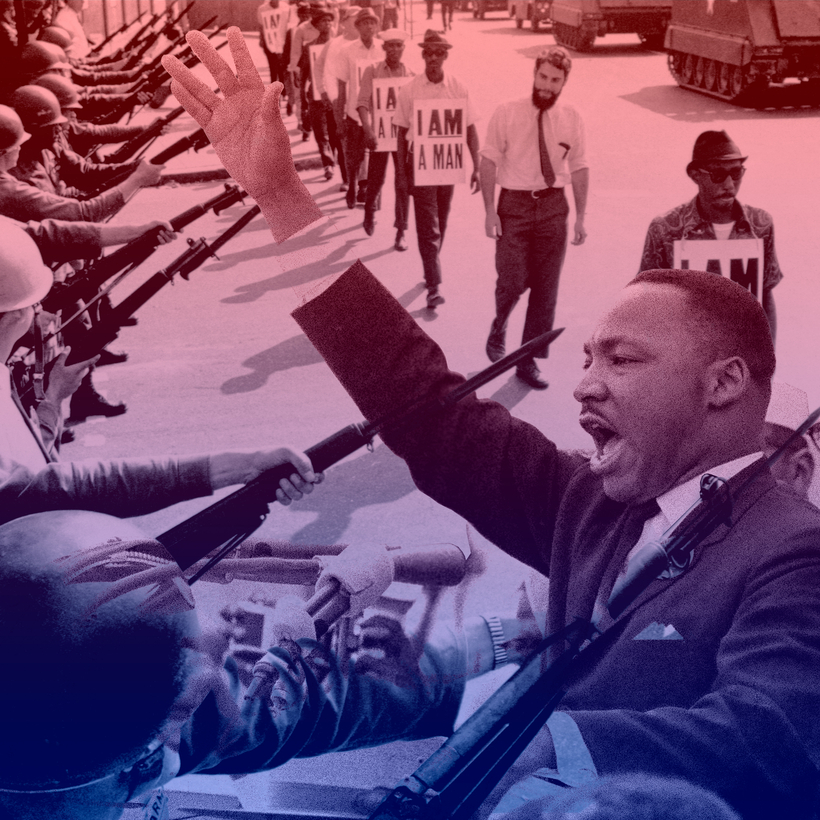Try to take the long view of American history and the 1960s will play a trick on your eyes. The years go by, but that electric and cataclysmic decade never gets very far away. Vietnam, the sexual revolution, the Kennedys, the counterculture—all have obsessed the nation’s politics well into the 21st century. If you were planning a run for the White House at any point between the Nixon and Obama presidencies, a safe bet was that you would have to spend at least two months explaining something you did in the years 1967–69.
Perhaps not surprisingly, then, the subject of historian Kevin Boyle’s new book, The Shattering, feels both well worn and painfully relevant. In its pages, Boyle depicts an America whose professed ideals and self-image are mocked by the persistence of racial apartheid and a failed military adventure, a country terrorized by political violence and generally coming apart. Even in pandemic-era America, the traumas of the 60s still hit close to home.
Boyle’s story begins at a July Fourth gathering in 1961, with a group of Chicagoans posing proudly in front of a flock of American flags. In their faces, Boyle sees stand-ins for millions of other white, middle-class Americans, enjoying the postwar abundance still easily available to them. They are prosperous, secure in their cultural and familial bonds, and confident in their country and its future. They don’t know it, but the events of the decade to come will challenge their communal ties and destroy the idea of national consensus—the “shattering” of Boyle’s title.
Boyle, winner of the 2004 National Book Award for his Jazz Age book, Arc of Justice, brings to the 60s era a roving curiosity and a rare gift for narrative sweep. He frequently, and expertly, combines understatement with revealing detail to demonstrate that white America’s old illusions of goodness and simplicity often had little basis in reality. Peering inside “the baroque splendor of [Chicago’s] Church of the Holy Innocents,” for instance, he finds a “twenty-four-year-old tailor clinging to his tattered trade and his eighteen-year-old bride, who on her wedding day was at least six weeks pregnant.”
Even in pandemic-era America, the traumas of the 60s still hit close to home.
The history of the 60s, of course, does not lack for talented writers spinning absorbing narratives. Readers unfamiliar with the period might do just as well to start with the work of Taylor Branch on civil rights or Neil Sheehan and David Halberstam on Vietnam.
Boyle’s contribution is to present the conflicts over racial justice, sexual liberation, and Cold War geopolitics in a single story of unraveling. This approach creates surprising pairings—on a single page we see both Norma McCorvey, the woman soon to become “Jane Roe” of Roe v. Wade, in a Florida parking lot smoking a joint, and Richard Nixon, in the White House, wiping tears away as he reviews his speech on the passing of Dwight David Eisenhower.
Sometimes, The Shattering drops in on a 60s standby whose perspective is a little too familiar—yes, yes, we know what Joan Didion’s Los Angeles felt like as the decade spun out of control. But Boyle’s pace is fast and his research wide-ranging enough to consistently challenge past notions of what exactly the 60s meant.
Conservative critics of Black Lives Matter talk wistfully about the kinder, gentler ethos of Martin Luther King Jr. and “I Have a Dream,” but Boyle reminds us that the early-60s civil-rights movement was never just “Kumbaya.”After the murder of James Chaney, the Mississippi civil-rights worker, we see the activist Dave Dennis addressing Chaney’s mourners: “I’ve got vengeance in my heart tonight…. If you go back home and take what these white men in Mississippi are doing to us, if you take it and don’t do something about it, then God damn your souls.”
Boyle takes his story past the official end of the 60s to the 1972 presidential campaign, with Nixon urging voters to “come home to the great principles we Americans believe in together.” The line reads as darkly comic now, given the depths of the nation’s divisions and the speaker’s own role in exacerbating them, but Nixon won re-election that year with 49 out of 50 states. That may be the most enduring legacy of the 60s: the persistent hope that the country can be put back together again, even as each day brings new signs of its breaking further apart.
Jonathan Darman is the author of Landslide: LBJ and Ronald Reagan at the Dawn of a New America


